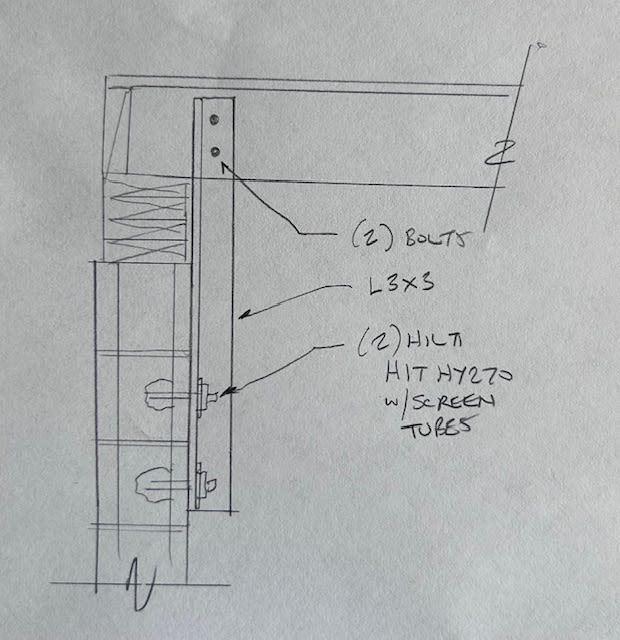This is a unique one...
Looked at a house in a flood zone that was built upon a crawlspace with an ungrouted masonry block wall and four (4) 2"x6" sill plates between the 8"x16" block foundation and 2"x8" floor joists. I also found out that there is no anchor bolts at all so I am trying to specify a connection between the block and the sill but I am coming up empty. I've tried the Simpson FRFP, URFP, and FJA and can't seem to get them to work for this application. I even called Simpson Strong Tie and they said they didn't know of something they could specify. Has anyone ever run into a scenario like this and if so, what did you end up using to fasten everything together???

Looked at a house in a flood zone that was built upon a crawlspace with an ungrouted masonry block wall and four (4) 2"x6" sill plates between the 8"x16" block foundation and 2"x8" floor joists. I also found out that there is no anchor bolts at all so I am trying to specify a connection between the block and the sill but I am coming up empty. I've tried the Simpson FRFP, URFP, and FJA and can't seem to get them to work for this application. I even called Simpson Strong Tie and they said they didn't know of something they could specify. Has anyone ever run into a scenario like this and if so, what did you end up using to fasten everything together???


